Christian Symbolism on Roman Coins.
Coins struck before the first Christian-related types.
Question: Were there Christian references on Roman coins before the time of Constantine (AD 307-337)?
Answer: No.
Chi-rhos ( ) on coins of Constantine are Christian symbols. However, there are chi-rhos on coins that are not Christian symbols. Of course, many words and names begin with "Chr" and it takes other evidence to say that a particular chi-rho is a Christian chi-rho. For example, there were chi-rhos on coins long before the time of Christ.
) on coins of Constantine are Christian symbols. However, there are chi-rhos on coins that are not Christian symbols. Of course, many words and names begin with "Chr" and it takes other evidence to say that a particular chi-rho is a Christian chi-rho. For example, there were chi-rhos on coins long before the time of Christ.
This massive bronze has a chi-rho between the legs of the eagle on the reverse (But it is not a very good example). From the third century BC, the chi-rho is obviously not a reference to Christ.
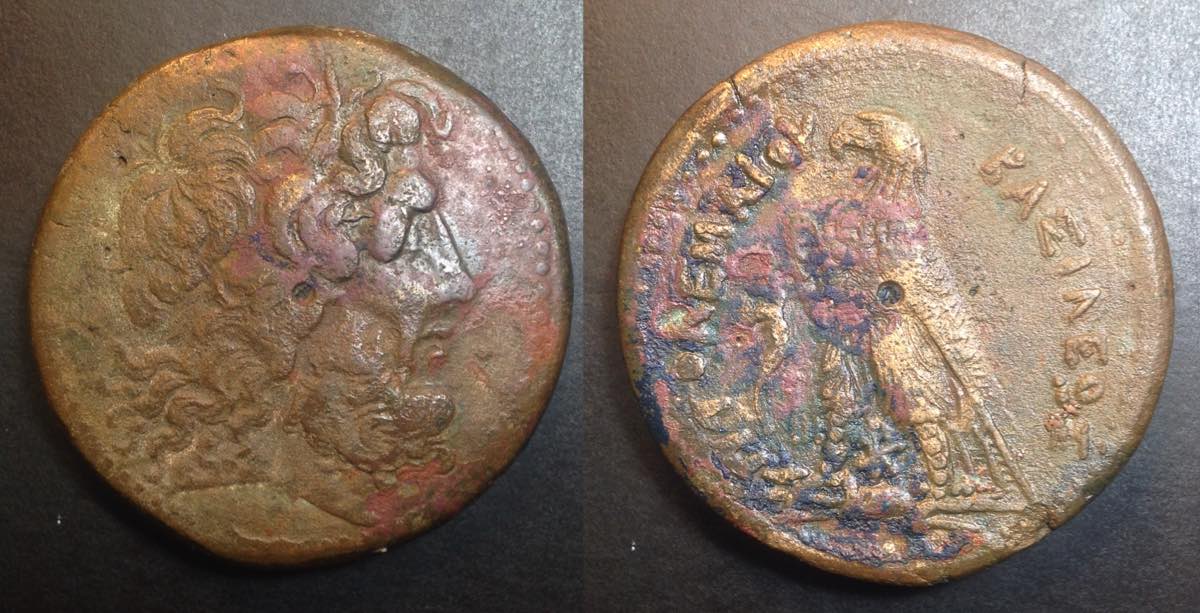
Ptolemy IV. 222-205/4 BC
41 mm in diameter and 70 grams.
Bust of Zeus right, diademed.
Eagle standing left on thunderbolt, with wings folded. Cornucopiae before (in left field). Chi-rho between the legs of the eagle.
(On some examples the chi-rho is clearer and many examples have other symbols, such as Δ, between the legs.)
Legend: ΠTOΛEMAIOY BAΣIΛEΩΣ ("of King Ptolemy")
Reference: Hazzard, Ptolemiac Coins, Figure 100, page 67.
A Christian legend? A legend of coins of Salonina, wife of Gallienus (253-268) is unique in the Roman series and sounds a bit Christian: AVG IN PACE (Augusta in peace).
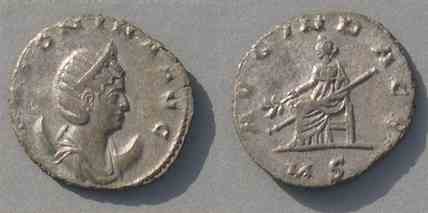
Salonina, wife of Gallienus (253-268)
Base silver. 21 mm. 3.79 grams.
SALONINA AVG
Her bust right, diademed and resting on crescent
AVG IN PACE
Pax (Peace) [or Salonina as Pax] seated left holding out olive branch in right and holding long transverse scepter
MS, mintmark of Mediolanum (Milan) below.
RIC Salonina (sole reign of Gallienus) 58.
The "M" in the mintmark is one of the very first mint indications, standing for "Mediolanum." When all coins were struck at Rome, there was no need to distinguish mints.
Long ago this type was considered possibly Christian, merely because of the legend, but now is not generally regarded as referencing Christianity. Here are comments reproduced from a 1976 book by Lukas Blois, The Policy of the Emperor Gallienus.
Here is a variety with AVGVSTA spelled out.
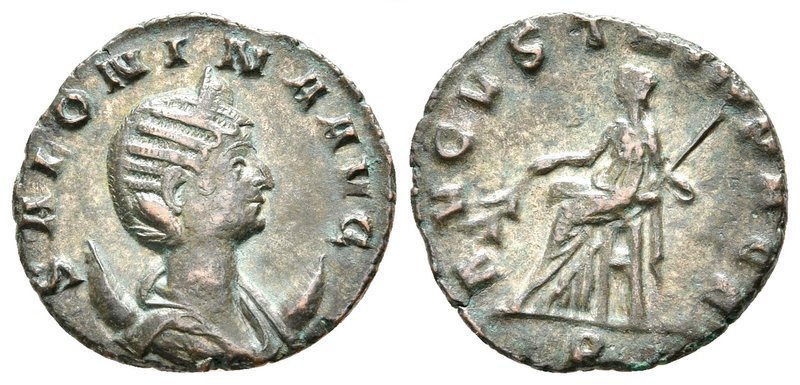
As above, but
AVGVSTA IN PACE
RIC Salonina (sole reign of Gallienus) 60.
The skekel of Tyre--the type of the "thirty pieces of silver".
Many ancient coins have monograms and some combine the letters chi, X, and rho, P. Next is a shekel of Tyre, regarded as the type of the "30 pieces of silver" that Judas was paid to betray Jesus. The type was dated in the upper left reverse field according to the era of Tyre in which year 1 = 126 BC. The nicest examples have early dates--long before the time of Christ. Here is an example dated 160 = 34 BC. Many scholars regard 33 AD as the year of the crucifixion, so this would be from the immediately following year.
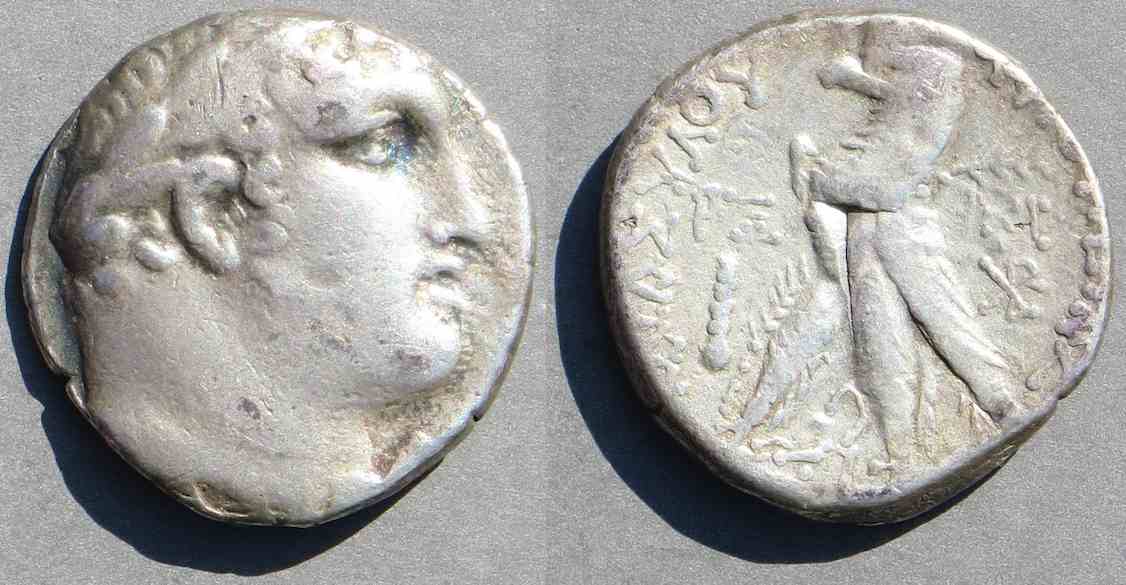
Tyre, Phoenicia. Silver shekel.25 mm. 13.84 grams. 12:00.
Minted year PΞ (letters above the club in the lower left field)
= year 160 = AD 34.
In the right field there is a palm banch over the eagle's shoulder,
an unclear monogram below that, and a
monogram below that with the appearance of a chi-rho (at 3:30 on the reverse.)
Most shekels from dates as late as this are in worse condition. This one is remarkably large and this combination of field symbols is not in the major references like BMC, SNG Danish, etc.
Did word get to Tyre about Christ soon after the crucifixion and some mint worker decide to commemorate Christ on the silver coin used to pay the temple tax and used throughout that entire region? Highly unlikely, but fun to speculate about!
The Star of Bethlehem.
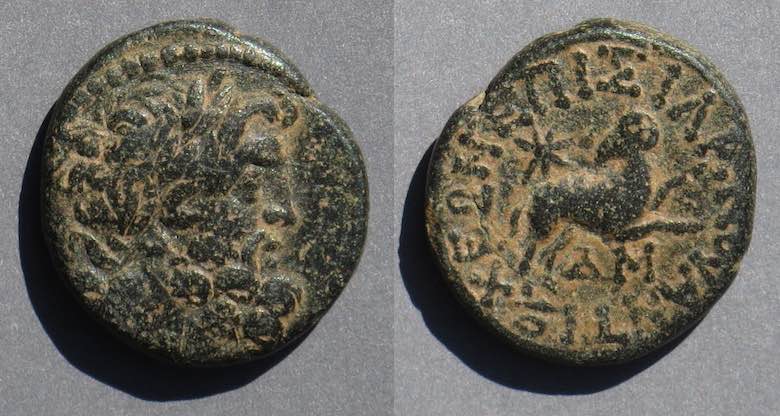 Antioch, in Syria.
Antioch, in Syria.
20-19 mm. 7.70 grams.
Head of Zeus right
Ram leaping right, looking back at star
EΠI ΣIΛANOV ANTIOXEΩN "reign of Silanus (he was legatus) Antioch"
ΔM below ram = 44 in the Actian dating system = 13/14 AD
RPC I 4269. McAlee 99.
Some enthusiasts have tried to connect this type to the Star of Bethlehem, which boosts the value of the type. Scholars seem to think the argument is so thin it is unworthy of comment. That is, there is no good reason to connect this type to the biblical story. However, if you are interested, one very detailed argument in favor is outlined by Micahel Molnar, an, astronomer in a book on the web here:
Return to the main page on early Christian symbols on Roman coins.
Go to coins from Table 1, the earliest Roman coins with Christian symbols.




 Antioch, in Syria.
Antioch, in Syria.